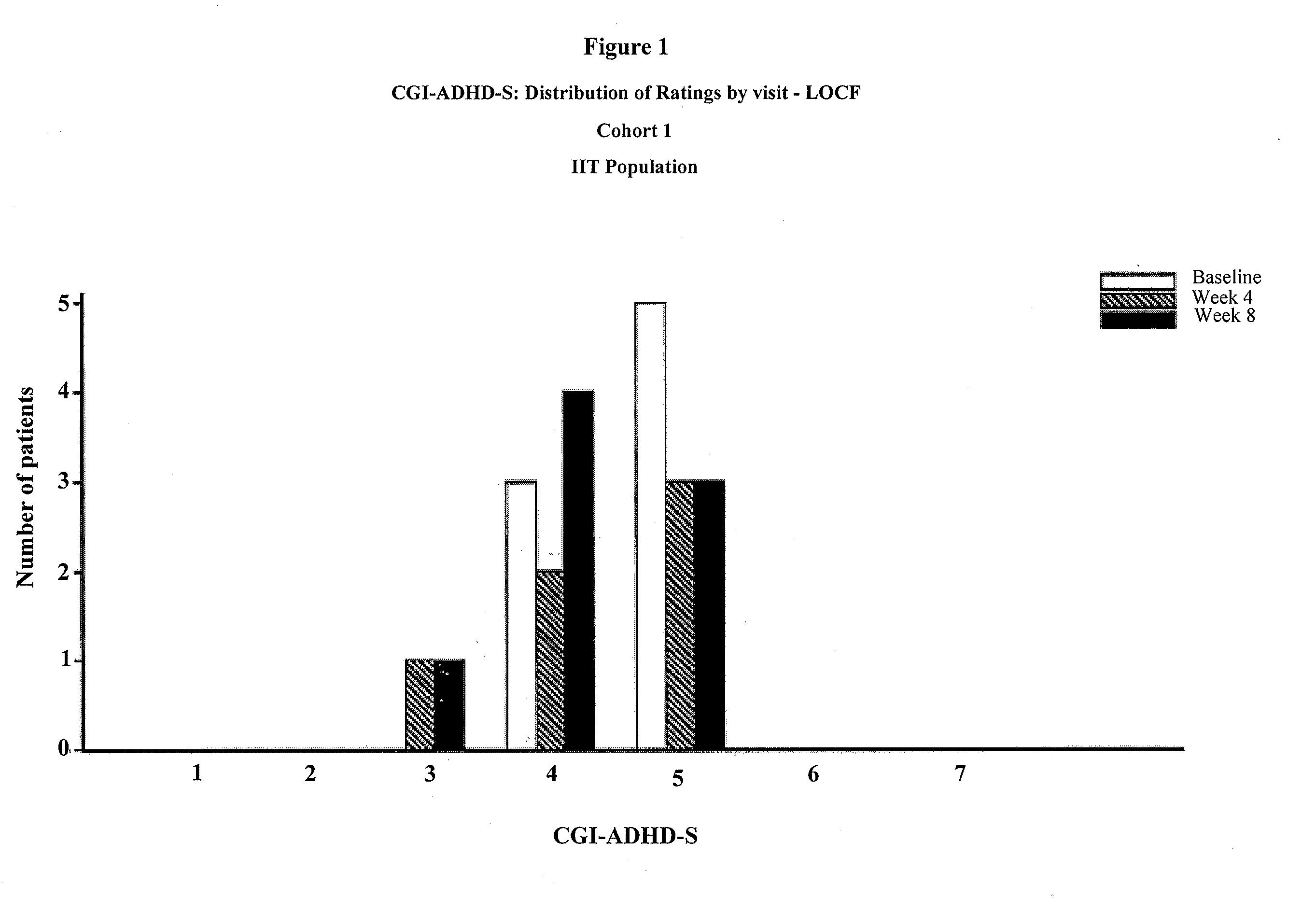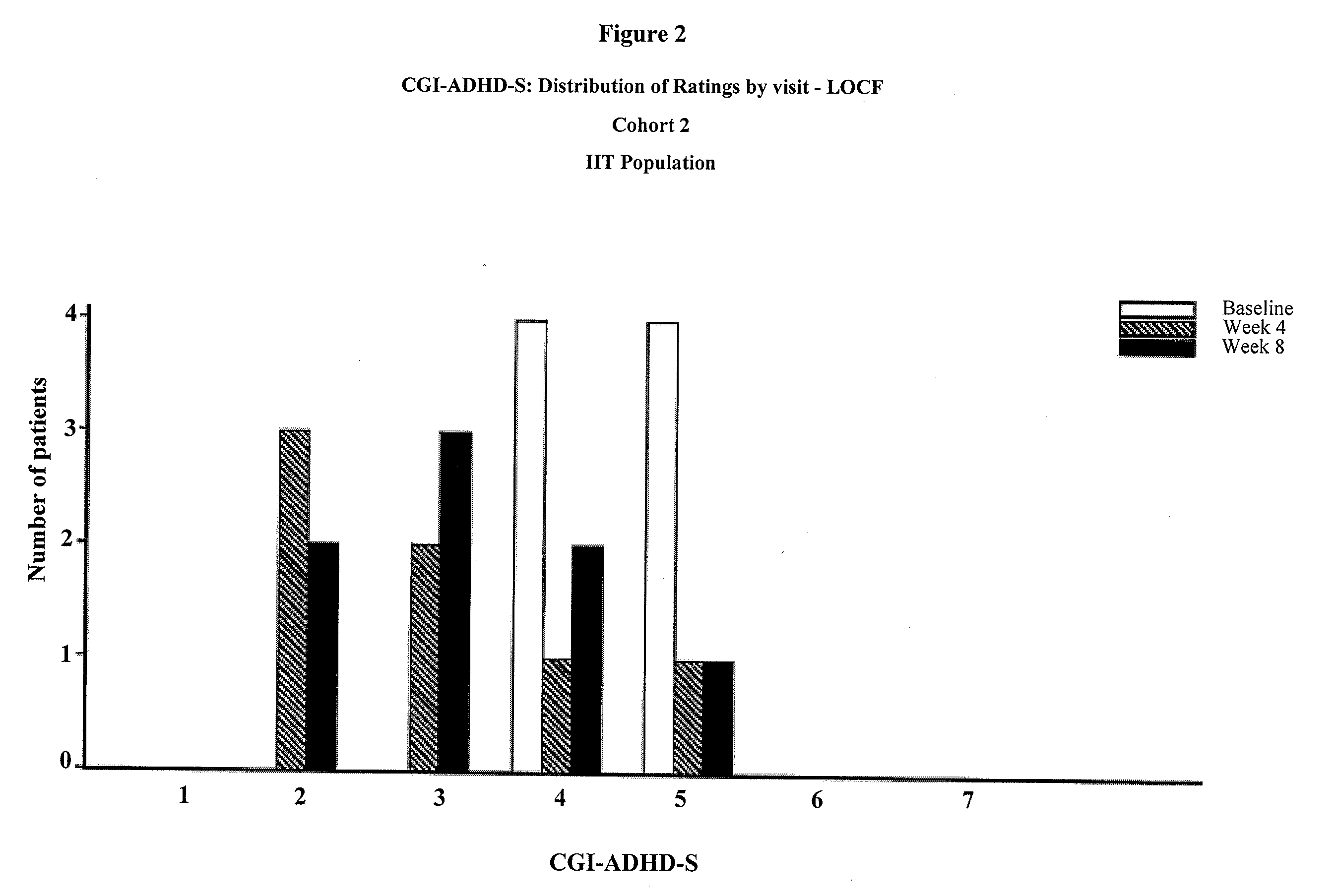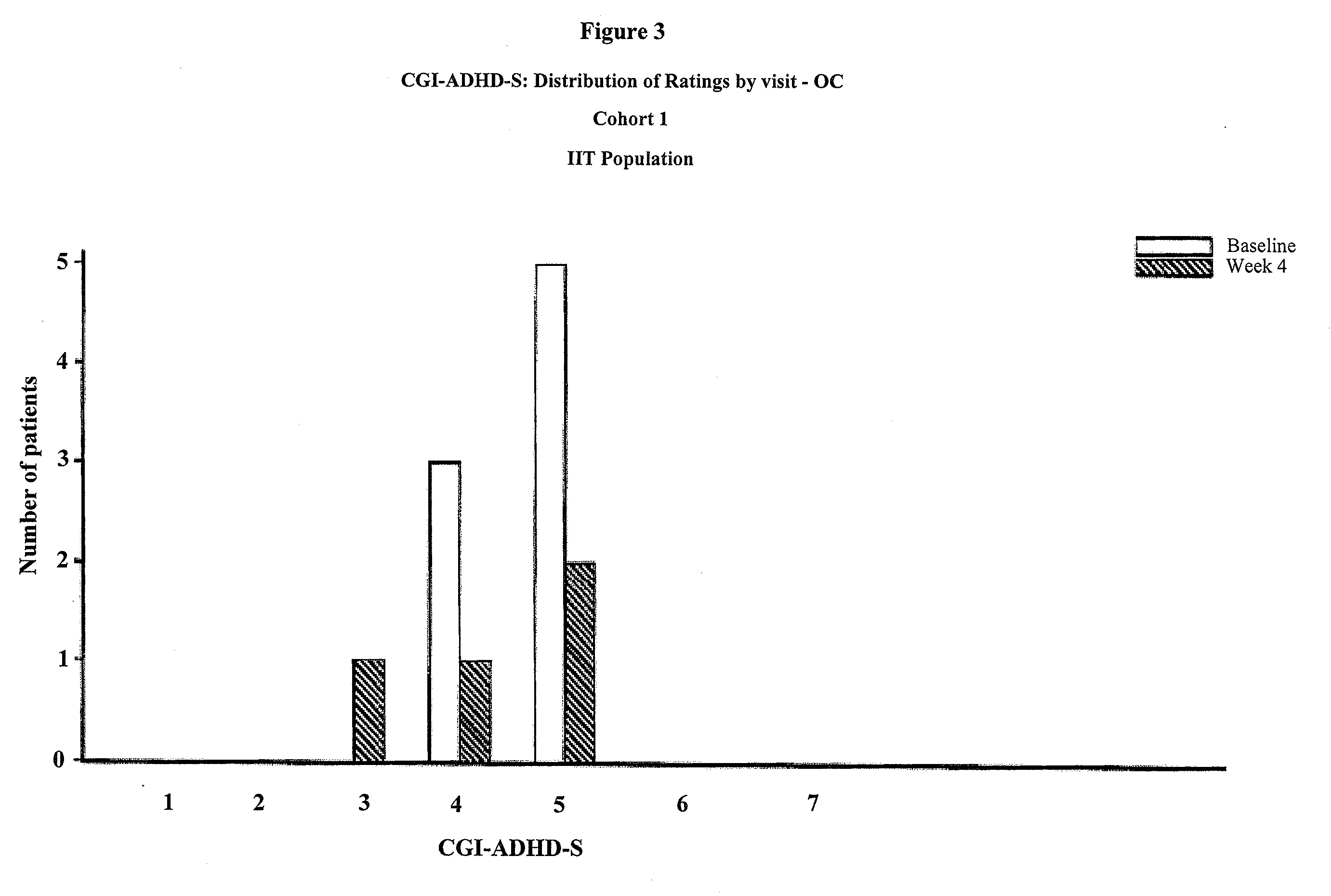Memantine For The Treatment Of Childhood Behavioral Disorders
a technology of memantine and behavioral disorders, applied in the field of memantine, can solve the problems of serious language delays, symptoms that interfere with academic, home or social functioning, and interfere with the normal development and functioning of children,
- Summary
- Abstract
- Description
- Claims
- Application Information
AI Technical Summary
Benefits of technology
Problems solved by technology
Method used
Image
Examples
example 1
Open-Label Evaluation of Memantine for the Treatment Of Autism
[0116]This clinical study will be conducted as an open-label, multi-center, dose-finding outpatient study assessing memantine in pediatric patients diagnosed with Autistic disorder (DSM-IV-TR criteria). Autistic disorder is characterized by impairment in social interaction, in communication skills, and by stereotyped / repetitive behaviors.
[0117]Patient population and diagnosis. The study population will consist of 20 children between the ages of 5 and 17 (preferably from between ages 6 and 12) who have been diagnosed with autistic behaviors, and who have not improved on other medications. Diagnosis is confirmed, or in the case of naïve patients, made, using the DSM-IV-TR™ criteria (described above) based on clinical evaluation and a semi-structured interview by a health professional, the Autistic Diagnostic Observation Schedule (ADOS-G). At Screening, patients must have a non-verbal IQ score of ≧40 as measured by the Test ...
example 2
Randomized, Double-Blind, Placebo-Controlled Trial for Memantine for the Treatment of Autistic Spectrum Disorder
[0144]The primary objective of this study is to evaluate the efficacy and safety of memantine in pediatric patients with autism.
[0145]Design. This clinical study will be conducted as a multicenter, randomized, double-blind, placebo-controlled, parallel-group, flexible dose study comparing memantine to placebo in pediatric outpatients diagnosed with autism using the DSM-IV, Autism Diagnostic Observation Schedule (ADOS) and Autism Diagnostic Inventory-Revised (ADI-R) criteria. The study will consist of 2 weeks of single-blind, placebo lead-in treatment followed by 12 weeks of double-blind, flexible-dose treatment At the end of the single-blind period, patients meeting the entry criteria for this study will be randomized (1:1) to one of 2 double-blind treatment groups (memantine or placebo).
[0146]Patient population and diagnosis. The study will consist of patients from about ...
example 3
Open-Label Evaluation of Memantine for the Treatment of ADHD
[0154]The primary objective of this study was to provide preliminary safety and tolerability evaluations of memantine in pediatric patients with ADHD combined type. The secondary objectives of the study were to evaluate the pharmacokinetics of memantine in this patient population, and to provide preliminary evaluations of efficacy on effect based on a 8-week administration of memantine.
[0155]Design. This clinical trial was conducted as an open-label, single center, dose-finding outpatient study assessing memantine in pediatric patients diagnosed with ADHD combined type (DSM-IV-TR™ criteria). ADHD combined type is characterized by the presence of significant inattentive and hyperactive / impulsive symptomotology.
[0156]This study involved a total of ten clinic visits: Screening, Baseline, weekly visits at the end of Weeks 1 to 8, and a Final visit 1 to 5 days following the last dose of study drug. The maximum duration between t...
PUM
| Property | Measurement | Unit |
|---|---|---|
| time | aaaaa | aaaaa |
| disorder | aaaaa | aaaaa |
| autistic spectrum disorder | aaaaa | aaaaa |
Abstract
Description
Claims
Application Information
 Login to View More
Login to View More - R&D
- Intellectual Property
- Life Sciences
- Materials
- Tech Scout
- Unparalleled Data Quality
- Higher Quality Content
- 60% Fewer Hallucinations
Browse by: Latest US Patents, China's latest patents, Technical Efficacy Thesaurus, Application Domain, Technology Topic, Popular Technical Reports.
© 2025 PatSnap. All rights reserved.Legal|Privacy policy|Modern Slavery Act Transparency Statement|Sitemap|About US| Contact US: help@patsnap.com



